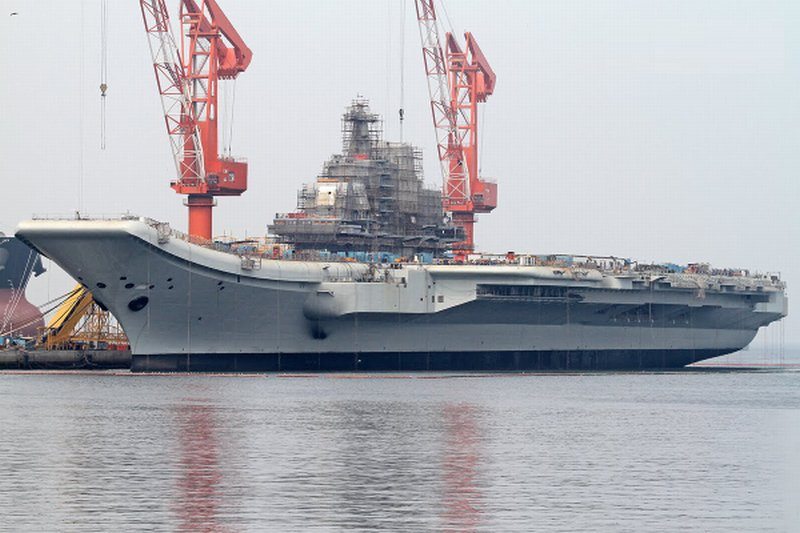China sought to downplay the capability of its first aircraft carrier Wednesday, saying the vessel would be used for training and “research”, amid concerns over the country’s military build-up.
China recently confirmed it was revamping an old Soviet ship to be its first carrier, a project that has added to regional worries over the country’s fast military expansion and growing assertiveness on territorial issues.
“We are currently re-fitting the body of an old aircraft carrier, and will use it for scientific research, experiments and training,” defence ministry spokesman Geng Yansheng told a news briefing.
Asked whether the carrier’s addition to China’s military arsenal would significantly raise the country’s military capability, Geng said only that to “overrate or underrate the carrier’s role are both incorrect”.
His comments came amid heightened tensions over a number of maritime territorial disputes involving China, notably in the South China Sea, which is believed to be rich in oil and gas and is claimed by several countries.
The issue has heated up recently with run-ins between China and fellow claimants Vietnam and the Philippines, sparking concern among its neighbouring countries and the United States.
In September, a row broke out between Japan and China over the disputed Senkaku Islands, known as the Diaoyu Islands in Chinese, located in the East China Sea.
Chen Bingde, the nation’s top military official, provided the first official acknowledgment of the aircraft carrier in a Hong Kong newspaper interview in early June.
Media reports and military analysts, however, have for years said the 300-metre (990-foot) ship was in development.
The ship, once called the Varyag, was originally built for the Soviet navy. Construction was interrupted by the collapse of the Soviet Union in 1991.
China reportedly bought the ship’s immense armoured hull — with no engine, electrics or propeller — in 1998.
State television on Wednesday broadcast rare footage of the ship, which is based in the northeastern port city of Dalian.
Geng declined to specify when the vessel would be officially unveiled.
But he stressed that it would not signal any change in the country’s official adherence to a peaceful military stance focused on national defence.
“We have a long coastline and vast waters under our jurisdiction, and guaranteeing maritime security and safeguarding maritime sovereignty and rights and interests is the sacred duty of China’s armed forces,” he said.
China’s People’s Liberation Army — the largest armed force in the world — is extremely secretive about its defence programmes, which benefit from a huge and expanding military budget boosted by the nation’s runaway economic growth.
The PLA also operates the country’s navy.










